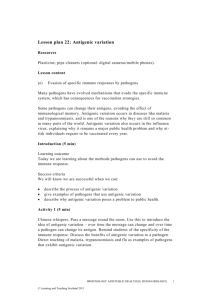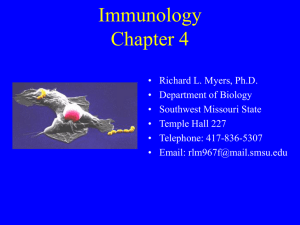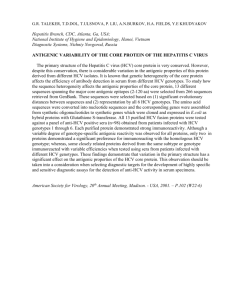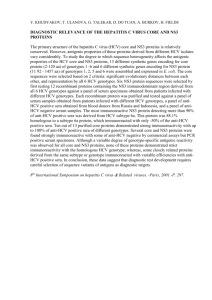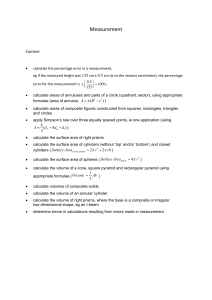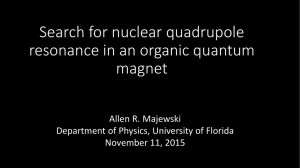24,5 Êá
advertisement
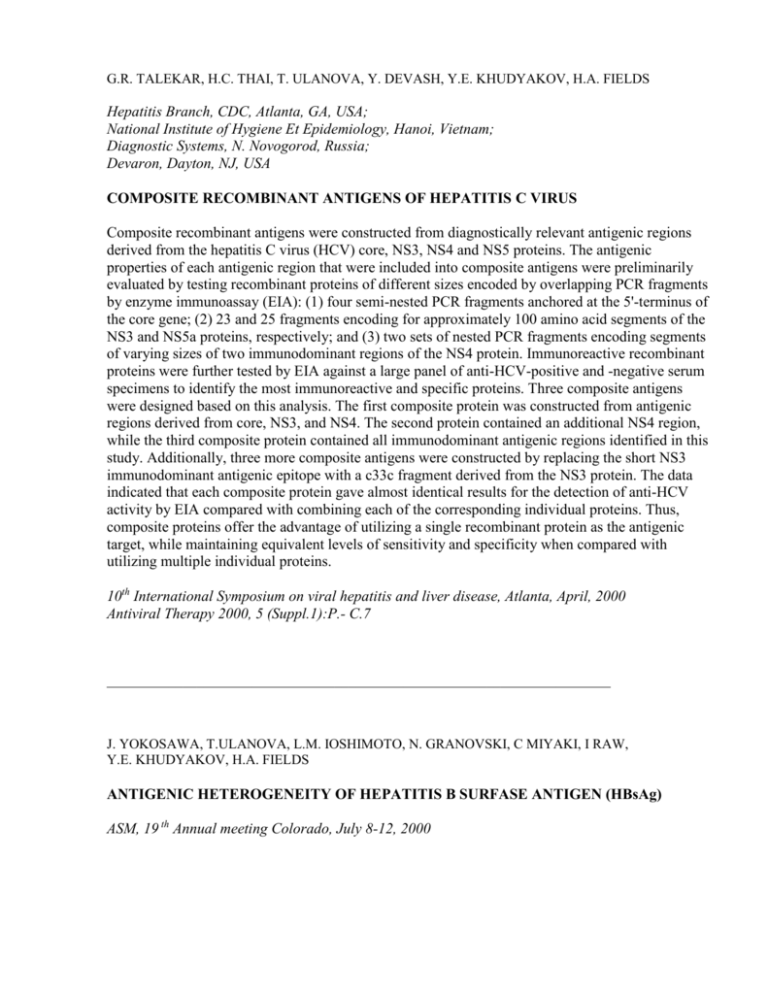
G.R. TALEKAR, H.C. THAI, T. ULANOVA, Y. DEVASH, Y.E. KHUDYAKOV, H.A. FIELDS Hepatitis Branch, CDC, Atlanta, GA, USA; National Institute of Hygiene Et Epidemiology, Hanoi, Vietnam; Diagnostic Systems, N. Novogorod, Russia; Devaron, Dayton, NJ, USA COMPOSITE RECOMBINANT ANTIGENS OF HEPATITIS C VIRUS Composite recombinant antigens were constructed from diagnostically relevant antigenic regions derived from the hepatitis C virus (HCV) core, NS3, NS4 and NS5 proteins. The antigenic properties of each antigenic region that were included into composite antigens were preliminarily evaluated by testing recombinant proteins of different sizes encoded by overlapping PCR fragments by enzyme immunoassay (EIA): (1) four semi-nested PCR fragments anchored at the 5'-terminus of the core gene; (2) 23 and 25 fragments encoding for approximately 100 amino acid segments of the NS3 and NS5a proteins, respectively; and (3) two sets of nested PCR fragments encoding segments of varying sizes of two immunodominant regions of the NS4 protein. Immunoreactive recombinant proteins were further tested by EIA against a large panel of anti-HCV-positive and -negative serum specimens to identify the most immunoreactive and specific proteins. Three composite antigens were designed based on this analysis. The first composite protein was constructed from antigenic regions derived from core, NS3, and NS4. The second protein contained an additional NS4 region, while the third composite protein contained all immunodominant antigenic regions identified in this study. Additionally, three more composite antigens were constructed by replacing the short NS3 immunodominant antigenic epitope with a c33c fragment derived from the NS3 protein. The data indicated that each composite protein gave almost identical results for the detection of anti-HCV activity by EIA compared with combining each of the corresponding individual proteins. Thus, composite proteins offer the advantage of utilizing a single recombinant protein as the antigenic target, while maintaining equivalent levels of sensitivity and specificity when compared with utilizing multiple individual proteins. 10th International Symposium on viral hepatitis and liver disease, Atlanta, April, 2000 Antiviral Therapy 2000, 5 (Suppl.1):P.- C.7 _________________________________________________________________________ J. YOKOSAWA, T.ULANOVA, L.M. IOSHIMOTO, N. GRANOVSKI, C MIYAKI, I RAW, Y.E. KHUDYAKOV, H.A. FIELDS ANTIGENIC HETEROGENEITY OF HEPATITIS B SURFASE ANTIGEN (HBsAg) ASM, 19 th Annual meeting Colorado, July 8-12, 2000


